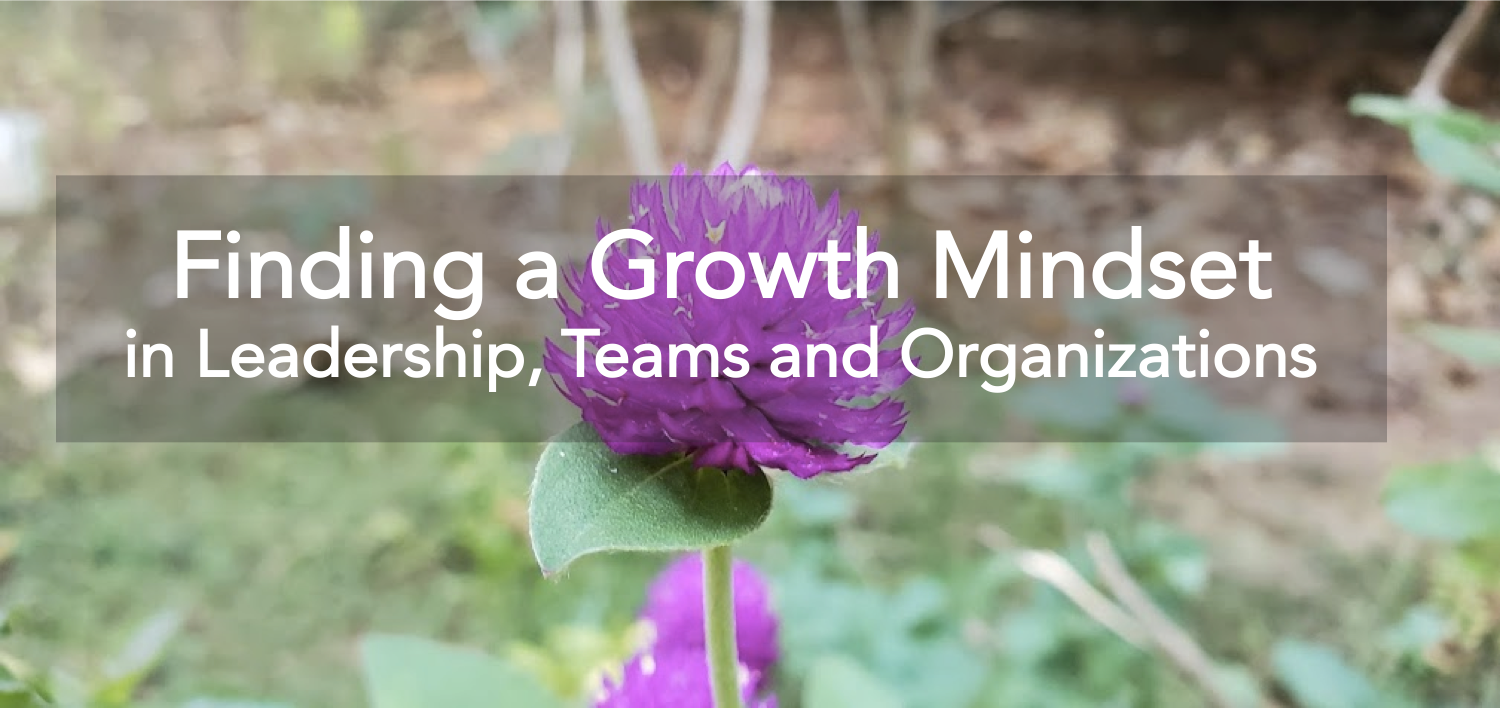Why do we get excited about some opportunities, and other times we look for a place to hide?
When I read Mindset: The New Psychology of Success by Carol S. Dweck, it brought back memories of my learning habits and patterns. We have both a fixed and growth mindset — it’s a matter of nurturing the right mindset.
As a student, I loved mind-mapping. It was my way of visualizing everything I learned, from high school to graduate college. I enjoyed capturing ideas and concepts visually, and it helped me remember for tests.
In a recent manager training session, we learned new ideas and growth mindset concepts with DiSC management style, constructive feedback and performance management. DiSC stands for dominance, influence, steadiness and conscientiousness.

Could a personality assessment help to identify strengths and how to work with other personalities? I didn’t think so until DiSC created a common language for communication. For instance, I am SC and portray capabilities like collaboration, support and reliability. During the training, we brainstormed and shared ideas on effective communication and engagement.
Embracing a growth mindset when practicing effective communication and engagement as a leader, here are some areas to focus on.
Delegation
It’s possible for managers to continue to be the primary contributors, but learning delegation the right way is crucial for team success as noted by Sarah Bettman, Linkage. Our role is to advance our team to the next level, and it’s important to know when to empower, motivate, guide or direct our team members to achieve business goals.
There is a fine balance between willingness and ability when it comes to doing the work, and we as leaders need to find the balance. This is a great opportunity to bring your growth mindset and help team members develop.
Continuous Feedback
Continuous feedback can be structured to be specific and nonjudgmental based on an individual’s task and behavior. A good framework for feedback is SBI: situation (describe where it occurred), behavior (identify action) and impact (describe result on the task).
A compliment sandwich (positive comment, negative feedback, positive comment) must be avoided at all costs. We must focus on reinforcing our constructive feedback to support team members’ growth. It’s just as important for us as leaders to request feedback from our team and peers to lead by example and establish a continuous feedback culture.
Sharing our mistakes and setbacks shows that we are all a work in progress and believe in extreme ownership — the good, bad and the ugly. My manager once shared that if a leader stops giving feedback, then they’ve given up on you. This resonated deeply.
Think about the modes of feedback that will help:
- Reinforcing feedback: Describe what the team member did well.
- Constructive feedback: Explain what the team member should do differently.
Team Strategy And KPIs
Business units usually have key performance indicators (KPIs) to measure growth and success. Setting SMART goals (specific, measurable, achievable, relevant and time-bound) can help a team to stay focused on the priorities, and these goals need to be relevant to the role. Our role as managers is to cascade priorities from the leadership team and establish goals to accomplish company targets. A few ways to measure team’s progress include tracking work productivity, evaluating performance and developing talent with biweekly, monthly and quarterly meetings.
Once we understand team members’ superpowers and what gets them excited and able to reach their full potential, we can leverage the growth mindset to tap into strengths and amplify their potential. This provides a safe environment for embracing setbacks and mistakes, and it is an opportunity to overcome challenges and build a path for growth.
Diverse Thinking
Not every team member delivers outcomes in the same way, and not every communication method is effective the first time. When you have a global team, it’s important to understand the diverse perspectives and communication styles. Understand that the dimensions of culture vary by country and region.
- Listen to every team member on their preference for communication. Some prefer direct, and even if that is not your leadership style, it may be necessary to foster the relationship.
- Take the time to pause for at least five seconds before you move on to the next topic of discussion.
- Build personal connections and acknowledge holidays around the world when planning milestones and events.
Generations In The Workplace
With the increasing population of millennials and Gen Z entering the workplace, do we continue to have the same processes for recognition as we had with previous generations? How can we incentivize the younger generations?
I’ve often found that millennials tend to be purpose-driven and achievement-oriented, while members of Gen Z are often entrepreneurial and connected. Let’s build workplace ecosystems that help bring out the best in each generation and adapt our frameworks to drive inclusivity in ideation and thinking. A different mindset opens doors for a constructive discussion.
Challenging the norm and asking why is a good break from the “this is how we did it” response. Creativity and innovation spark from fostering a safe environment for teams to get out of their comfort zone and learn about collective intelligence. Our opportunity lies in finding the similarities vs. the differences across generations.
We all have fixed and growth mindsets. Building a growth mindset can help create new opportunities to continue to develop our intelligence and embrace the learning process and the journey vs. focusing only on the end goal. As mentioned in Mindset, our fixed mindset persona was born to protect and keep us safe. We need to understand our persona’s point of view and direct to a new way of thinking toward a growth mindset.
The reality is that the best lessons in life are the experiences from our struggles, hardships and failures as we rise higher and stronger every time. As leaders, we don’t have all the answers, and we are in this together with our teams.
Originally published at https://www.forbes.com.


